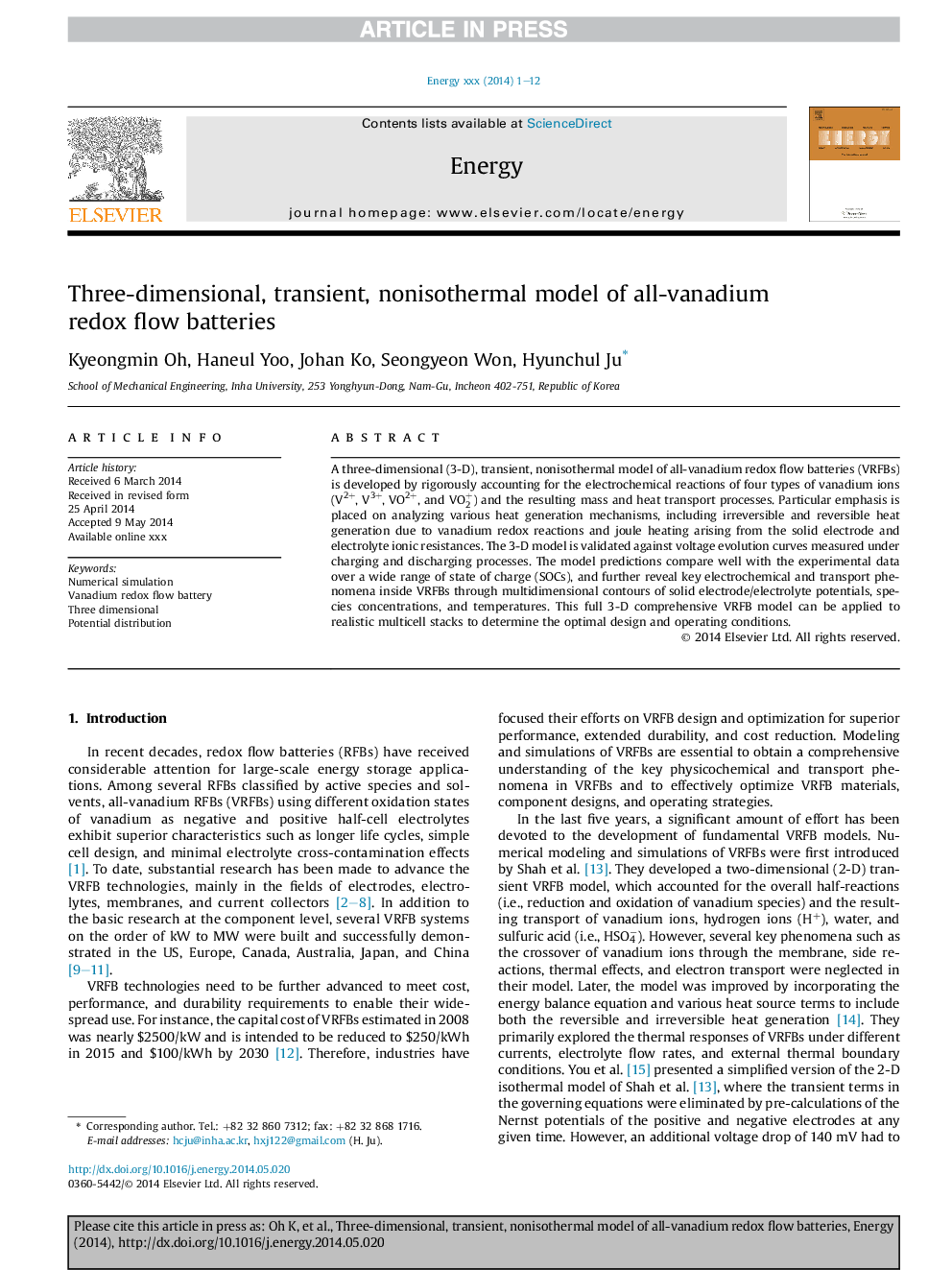| Article ID | Journal | Published Year | Pages | File Type |
|---|---|---|---|---|
| 8075618 | Energy | 2015 | 12 Pages |
Abstract
A three-dimensional (3-D), transient, nonisothermal model of all-vanadium redox flow batteries (VRFBs) is developed by rigorously accounting for the electrochemical reactions of four types of vanadium ions (V2+, V3+, VO2+, and VO2+) and the resulting mass and heat transport processes. Particular emphasis is placed on analyzing various heat generation mechanisms, including irreversible and reversible heat generation due to vanadium redox reactions and joule heating arising from the solid electrode and electrolyte ionic resistances. The 3-D model is validated against voltage evolution curves measured under charging and discharging processes. The model predictions compare well with the experimental data over a wide range of state of charge (SOCs), and further reveal key electrochemical and transport phenomena inside VRFBs through multidimensional contours of solid electrode/electrolyte potentials, species concentrations, and temperatures. This full 3-D comprehensive VRFB model can be applied to realistic multicell stacks to determine the optimal design and operating conditions.
Related Topics
Physical Sciences and Engineering
Energy
Energy (General)
Authors
Kyeongmin Oh, Haneul Yoo, Johan Ko, Seongyeon Won, Hyunchul Ju,
